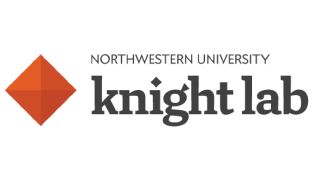Knight Lab Projects is a collaborative effort from the community at Northwestern University in Chicago and San Francisco. It comprises a team of designers, developers, students, and educators, all of whom work together to create digital storytelling tools.
The idea is to develop new ways to communicate digitally as a means to enhance journalism and its ever-changing development in the digital age. As such, this lab produces new tools regularly to help tell stories in different ways.
From a map that lets you move location to learn more about the area, to an audio embed that allows you to hear an actual crowd as you're reading about a protest, these and more tools are all freely available to use.
So can you use Knight Lab Projects in education?
What is Knight Lab Projects?
Knight Lab Projects is designed to help push journalism forward yet it is a very useful tool, or set of tools, for educators and students too. Since these are developed to be easy to use and intuitive, even younger students can get involved via nearly any device with a web browser.

Telling stories in a new way can allow students to change how they think and become more engaged in the subjects they are covering. Since this is a very open set of platforms, it can be applied to many subjects, from English and social studies to history and STEM.
The work is ongoing and community-based so expect there to be more tools to be added. But equally, you may find some glitches along the way so it's always a good idea to test these out before use in class, and even to then work with students to make sure it's all clear and they're able to use the tools.
How does Knight Lab Projects work?
Knight Lab Projects is made up of a selection of tools you can use via a web browser. Each one can be selected to take you onto a page that explains what it is and how it works. There is then a big "Make" button in green that allows you and your students to start using the tool to build you own creations.

For example, the StoryMap (above) allows you to pull in media from a variety of sources to tell stories that are geographically focused. Perhaps a class could tell a story of the U.S. westward expansion, setting separate sections for each student or group.
There are other tools including:
- SceneVR, which incorporates 360-degree photos and annotations to tell stories;
- Soundcite, which lets you put audio into text as it's read;
- Timeline, to make a timeline look great;
- StoryLine, to use numbers as a base to build stories from;
- and Juxtapose, to show two images side by side telling the change.
These are the basics but there are also more in beta and prototype, but more on those next.
What are the best Knight Lab Projects features?
Knight Lab Projects offers lots of helpful tools but for in-class use something such as SceneVR might be a bit difficult to navigate without a dedicated 360-degree camera. But most of the other tools should be easy to use by students right there from their own or the class device.

The selection of tools is a great part of this offering as it allows students to choose which is best for the story they want to tell. There are also projects in beta or at the prototype phases, allowing students to try early and feel they're doing something totally new.
For example, the SnapMap prototype allows you to collate photos you've taken in a way that populates a map – a great way to describe a travel blog or a school trip perhaps.
BookRx is another useful prototype that uses the person's Twitter account. Based on data in there, it is able to make intelligent predictions of books you're going to want to read.
Soundcite could be a very useful tool in music, allowing students to add musical parts into text describing what is happening as they work.
How much does Knight Lab Projects cost?
Knight Lab Projects is a free community-based system that is funded by Northwestern University. All the tools it has created so far are available freely to use online, with no ads. You don't even have to give any personal info such as a name or email to get started using these tools.
Knight Lab Projects best tips and tricks
Map the holidays
Have students keep a timeline-based diary of the holidays, not necessarily to turn in, but as a way to get them using the tool and perhaps expressing themselves in a digital journal too.
Storymap a trip
Have students document a trip they've been on, with school or otherwise, and upload using the mapping tool to help make it a visual experience.
Use Storyline in history and math
The Storyline tool puts numbers front and center with words as annotations. Have students tell the story of their numbers -- be it math, physics, chemistry, or beyond -- using this system.

